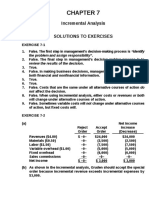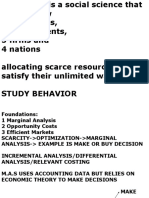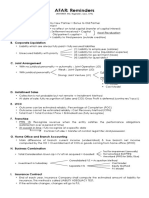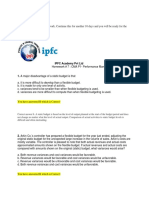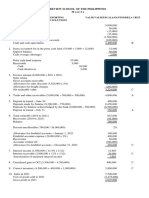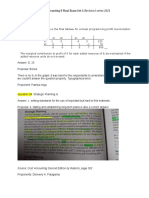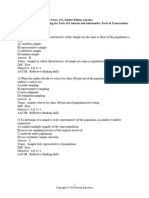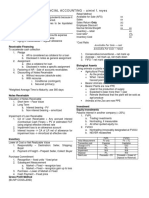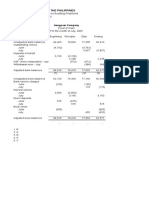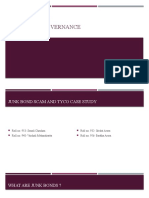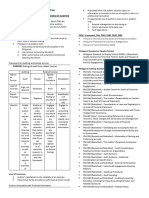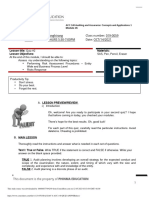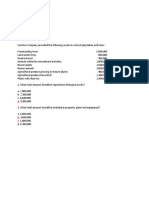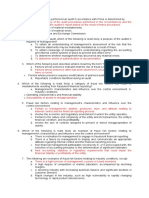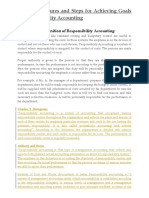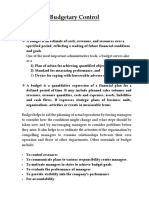0% found this document useful (0 votes)
200 views8 pagesResponsibility Accounting.
This document discusses responsibility accounting, including its meaning, features, and steps for achieving goals. Some key points:
1) Responsibility accounting assigns responsibility for controlling costs to individuals within an organization. It focuses on people rather than just systems of control. Managers are made personally responsible for keeping budgets and costs under control.
2) Features include using both planned and actual cost/revenue data, identifying responsibility centers that represent spheres of authority, designing the accounting system to match the organizational structure, and assigning only controllable costs/revenues to individuals for performance evaluation.
3) The organization is divided into responsibility centers like cost centers, profit centers, and investment centers. Managers of these centers are responsible for inputs
Uploaded by
Irfan KhanCopyright
© © All Rights Reserved
We take content rights seriously. If you suspect this is your content, claim it here.
Available Formats
Download as DOCX, PDF, TXT or read online on Scribd
0% found this document useful (0 votes)
200 views8 pagesResponsibility Accounting.
This document discusses responsibility accounting, including its meaning, features, and steps for achieving goals. Some key points:
1) Responsibility accounting assigns responsibility for controlling costs to individuals within an organization. It focuses on people rather than just systems of control. Managers are made personally responsible for keeping budgets and costs under control.
2) Features include using both planned and actual cost/revenue data, identifying responsibility centers that represent spheres of authority, designing the accounting system to match the organizational structure, and assigning only controllable costs/revenues to individuals for performance evaluation.
3) The organization is divided into responsibility centers like cost centers, profit centers, and investment centers. Managers of these centers are responsible for inputs
Uploaded by
Irfan KhanCopyright
© © All Rights Reserved
We take content rights seriously. If you suspect this is your content, claim it here.
Available Formats
Download as DOCX, PDF, TXT or read online on Scribd
/ 8



